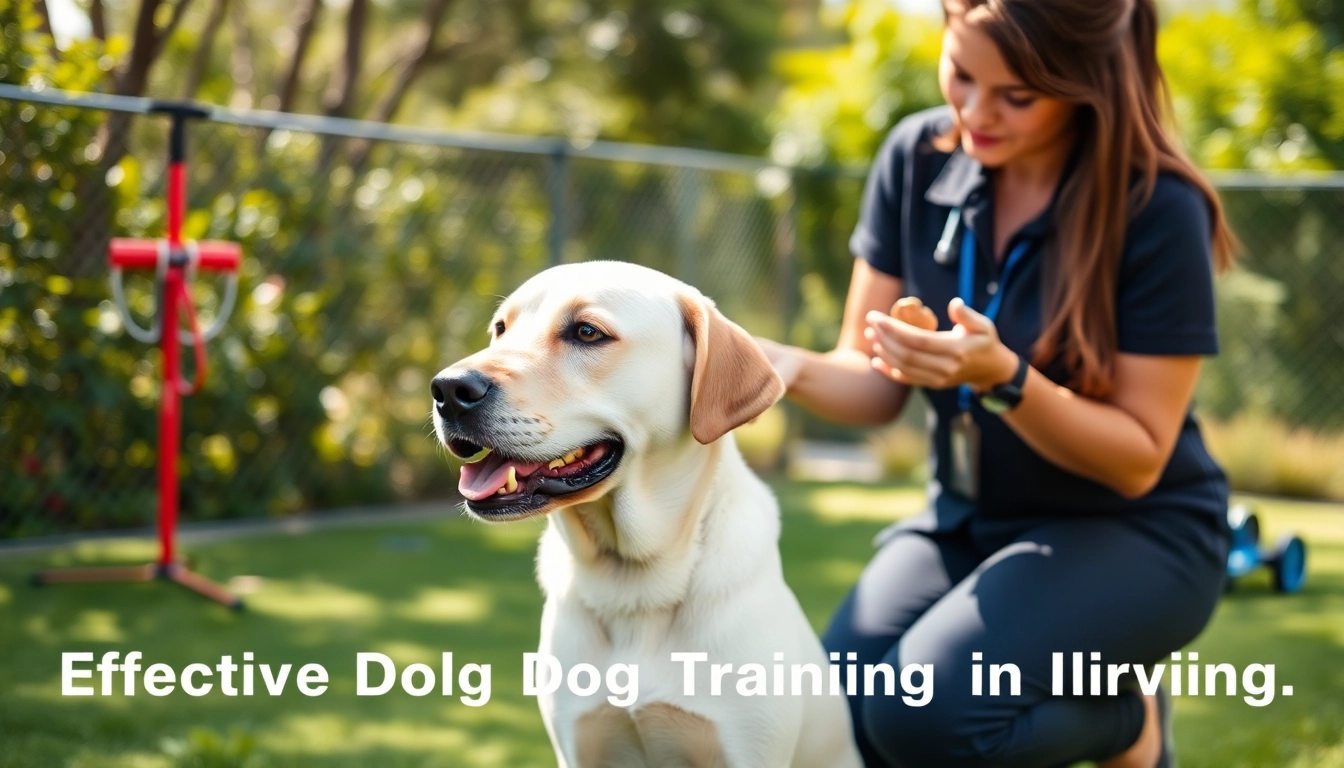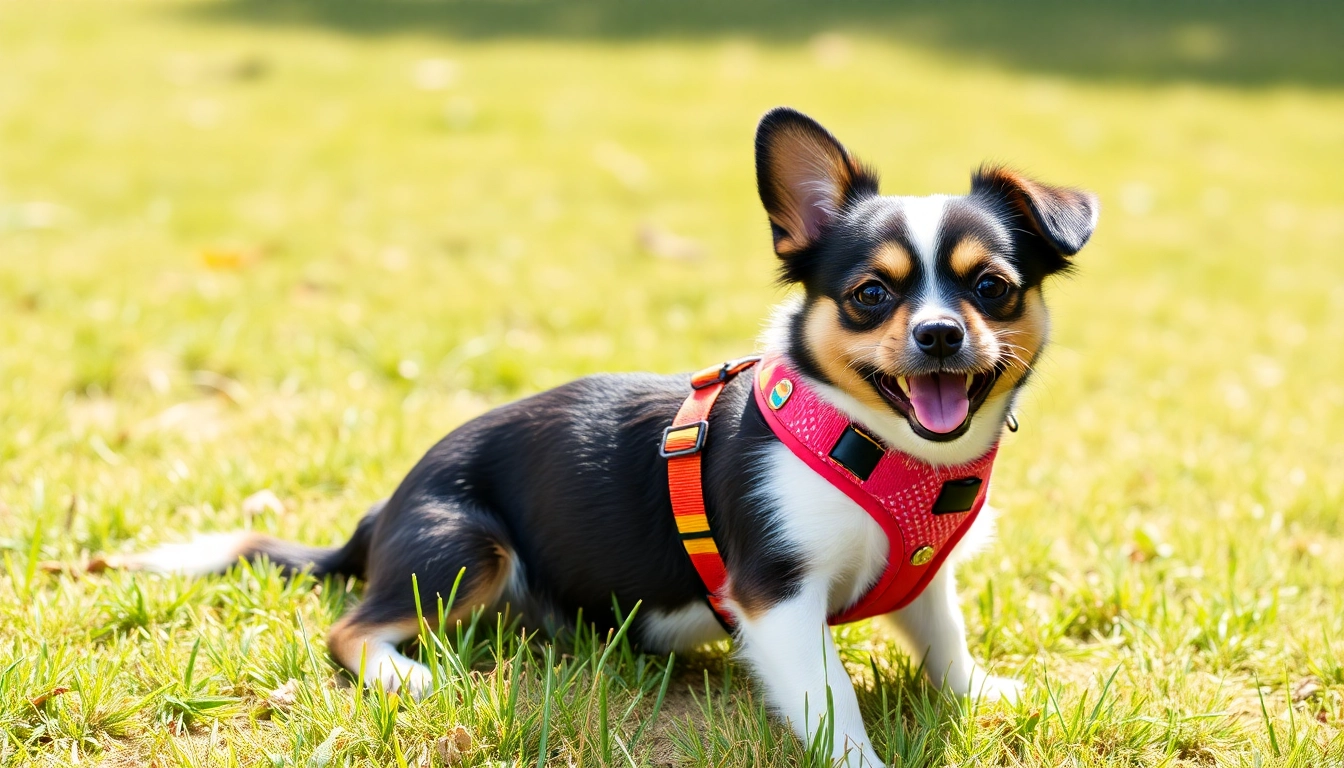Understanding Dog Training Principles
Dog training is an essential aspect of pet ownership, helping to ensure that your furry companion is well-behaved, socially adjusted, and safe in various environments. Understanding the principles of dog training can greatly enhance your experience as a dog owner. Whether you’re in Irvine or elsewhere, the foundation of effective training remains the same. To find a suitable program or trainer, you might start with a search for Dog Training Irvine services.
The Importance of Positive Reinforcement
Positive reinforcement is a cornerstone of effective dog training methodologies. This approach involves rewarding desired behaviors rather than punishing undesirable ones. Rewards can include treats, praise, or toys and serve to reinforce good behavior by associating it with something positive. This technique builds trust between you and your dog, facilitating a stronger bond and more effective learning process.
Research shows that dogs trained with positive reinforcement are not only more eager to learn but also develop fewer behavioral issues, as they associate training with pleasure instead of fear. Moreover, positive reinforcement promotes emotional well-being and reduces anxiety in dogs, leading to a more harmonious living situation.
Common Training Methodologies
When it comes to dog training, several methodologies are commonly used:
- Clicker Training: This method involves the use of a clicker to mark desired behaviors at the moment they occur, followed by a reward. Clicking creates a consistent cue that tells the dog it did something right.
- Operant Conditioning: This is based on behavioral science, where behaviors are modified through reinforcement (positive or negative). It’s a powerful tool in teaching a wide variety of commands.
- Relationship-Based Training: This method focuses on building a solid and trusting relationship with your dog. It emphasizes connection and understanding between the trainer and the dog.
Choosing the right methodology depends on your goals, your dog’s personality, and the context in which training takes place. For instance, if you’re working with a rescue dog who may have trust issues, relationship-based training may be most effective.
Choosing the Right Training Program for Your Dog
Not all training programs are created equal, and finding the right fit for your dog involves some research. Various factors to consider include:
- Goals of Training: Are you looking to teach basic obedience, advanced tricks, or manage behavioral issues? Different programs cater to varying needs.
- Training Environment: Some dogs are more responsive to group settings, while others may thrive in one-on-one sessions.
- Trainer’s Philosophy: Ensure the trainer subscribes to methods you are comfortable with, particularly looking for a focus on positive reinforcement.
In Irvine, many options are available, each providing a unique approach that can cater to your dog’s needs and your training objectives.
Essential Commands Every Dog Should Know
Every well-trained dog should know a few essential commands. Whether you’re training a puppy or an older dog, these commands form the foundation for good behavior.
Basic Obedience Commands
Basic commands such as ‘sit’, ‘stay’, ‘come’, and ‘down’ are fundamental to any dog’s training. Here’s a brief overview of each:
- Sit: Teaching your dog to sit is often the first command to master. It can help manage excitement and gives you control in various environments.
- Stay: This command is crucial for keeping your dog safe; it keeps them in place until released.
- Come: A reliable recall is vital. It’s essential for ensuring your dog returns to you when called, especially in potentially dangerous situations.
- Down: Teaching your dog to lie down encourages calmness and can help in managing exuberant behavior.
These commands not only improve control but also enhance communication between you and your dog.
Advanced Commands and Tricks
Once your dog has mastered the basics, you can progress to advanced commands and tricks that enhance their skill set and your bond:
- Shake Hands: A fun command that impresses other people and reinforces the dog’s ability to follow instructions.
- Roll Over: This trick is playful and showcases the dog’s agility. It can also be beneficial for their physical fitness.
- Leave It: This command is especially useful for teaching impulse control, as it helps the dog learn not to engage in some behaviors.
Advanced commands require patience and consistent practice. In addition to strengthening your relationship, mastery of these commands can greatly enhance your dog’s responsiveness to your cues.
Training for Specific Situations
Many dog owners need to prepare their pets for specific situations. Whether it’s adjusting to a new environment, focusing on specific behavioral issues, or even preparing for competitions, your dog’s training can be tailored.
For instance, if you’re anticipating a move or a newborn baby, helping your dog adjust through exposure and training can alleviate stress. Dog trainers often recommend gradual exposure combined with the positive reinforcement of calm behaviors during these transitions.
Finding the Best Dog Training in Irvine
With numerous options available, finding the best dog training in Irvine can feel overwhelming. This section provides a guide to navigating the options effectively.
Researching Local Trainers and Programs
bBefore making a decision, it’s essential to conduct thorough research. Start by looking for trainers who specialize in the type of training you need, whether basic obedience or more specialized behavior correction. Consider online forums like Reddit or local pet owner communities that gather recommendations and experiences from fellow Irvine residents.
Many businesses also have informative websites detailing their methods, credentials, and testimonials, which can help you determine a good fit for your needs.
Reading Reviews and Testimonials
Reviews and testimonials are invaluable tools in finding quality dog training services. Reading about other clients’ experiences gives insight into the effectiveness of various programs and trainers. Look for independent review platforms like Yelp or Google Reviews to get a balanced view.
When evaluating testimonials, consider the specific challenges and goals others had, as this can help you gauge a trainer’s suitability for your own needs.
Evaluating Cost and Training Options
Cost is another critical factor when deciding on a training program. Many programs in Irvine provide a variety of options, from group classes to private sessions:
- Group Classes: Usually, more budget-friendly and offer socialization opportunities for your dog.
- Private Lessons: Tailored to your dog’s specific needs, but typically at a higher cost.
- Board and Train: An intensive option where your dog stays with the trainer for a set period, receiving focused training.
Assess your budget against the type of training you believe will be most beneficial for your dog, balancing cost with quality and approach.
Tips for Dog Owners During Training Sessions
Training your dog requires commitment and consistency from the owner. Here are some essential tips to help you navigate through the sessions smoothly.
Creating a Positive Training Environment
Ensure that the training environment is conducive to learning. This means choosing a quiet space free from distractions. A calm, relaxed atmosphere enhances your dog’s ability to focus.
Use positive reinforcement consistently during sessions. This builds enthusiasm for learning and encourages your dog to be engaged in the process.
Managing Expectations and Patience
Training takes time, and every dog learns at their own pace. Keep realistic expectations, understanding that set-backs or slow progress are entirely normal. Celebrate small victories—this helps keep motivation high for both you and your dog.
Patience is critical. If your dog struggles with a command, take a step back and reassess your approach. Sometimes, changing your method or breaking commands into smaller parts can make a significant difference.
Incorporating Training into Daily Routines
Consistency is key to effective dog training. Incorporate short training sessions into your daily routine. This can be as simple as practicing commands during walks or incorporating training into playtime. The more natural you make training feel, the more effective it will be.
Dog training should feel like a series of built-in interactions instead of isolated events. Look for opportunities to reinforce learned behaviors in various real-life scenarios.
Enhancing Your Dog’s Socialization Skills
Socialization is just as important as obedience training. It prepares your dog to handle a variety of scenarios with confidence and reduces the likelihood of behavioral issues stemming from fear or anxiety.
Introducing Your Dog to New Environments
Expose your dog to various environments—parks, pet-friendly shops, or busy streets. Use positive reinforcement to reward calm behaviors during these exposures. Vary the settings to help your dog adapt to change and build confidence.
When exploring new places, consider your dog’s behaviors and reactions. If they’re anxious, increase exposure gradually rather than overwhelming them with unfamiliar experiences.
Interacting with Other Dogs and People
Encourage friendly interactions with other dogs and people. Dog parks or playgroups can be great for this, but careful monitoring is essential to ensure all interactions are positive.
Teach your dog proper greeting behaviors, such as sitting when meeting new people or greeting other dogs appropriately. Socialization classes are also beneficial for structured learning and exposure.
Recognizing Signs of Stress or Aggression
Understanding your dog’s body language is essential to effectively socialize them. Recognize signs of stress or aggression, such as growling, a raised tail, or tensed posture. If you notice these signs, it may be necessary to remove your dog from the situation or approach gradual desensitization training.
Consulting with a professional trainer can provide tailored advice on how to address specific stressors, ensuring your dog can feel confident and safe in social settings.
As you delve into dog training in Irvine, remember that every dog is unique, and what works for one may not work for another. With patience, research, and a commitment to building a strong bond through training, you’ll set the foundation for a well-adjusted and happy canine companion.



